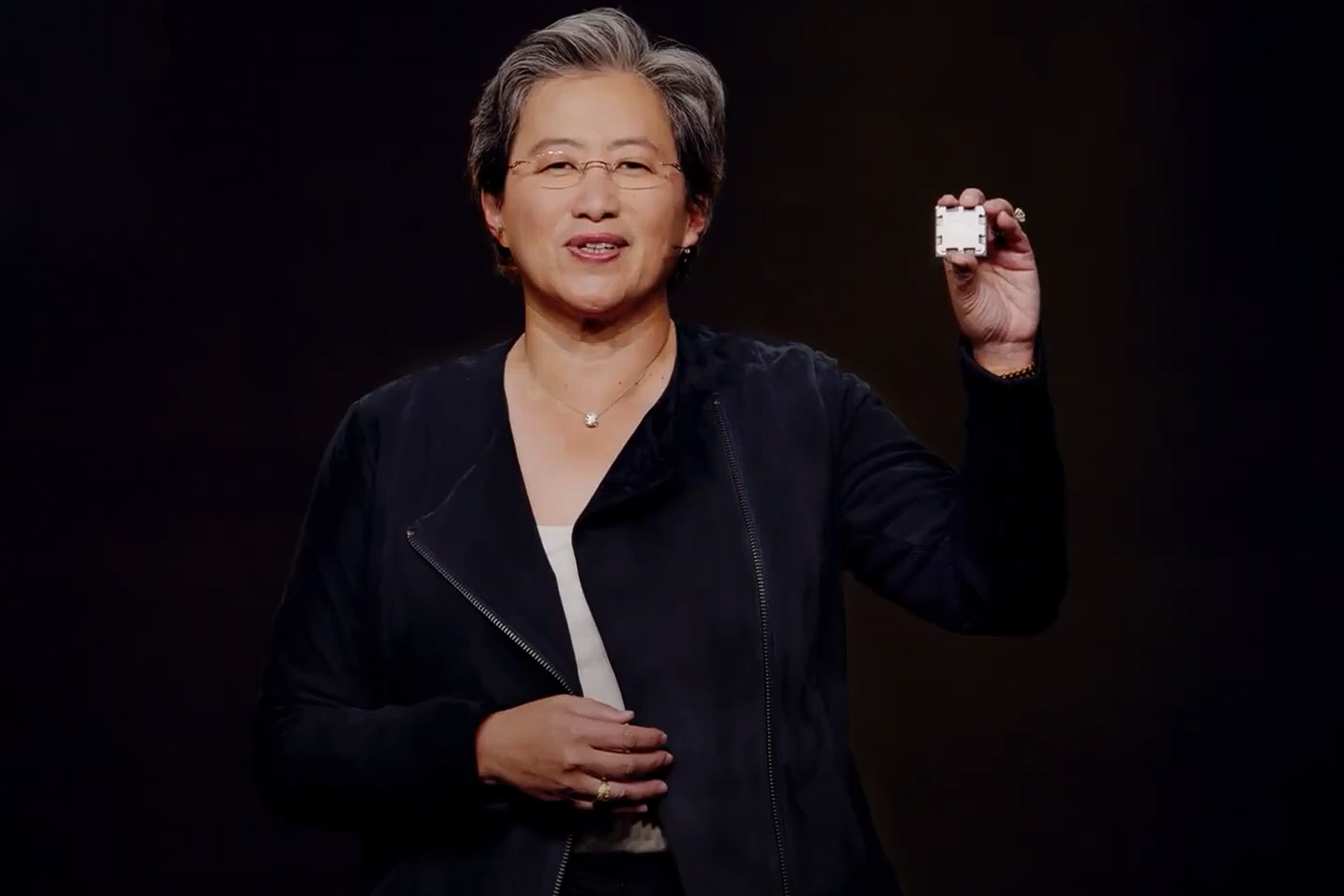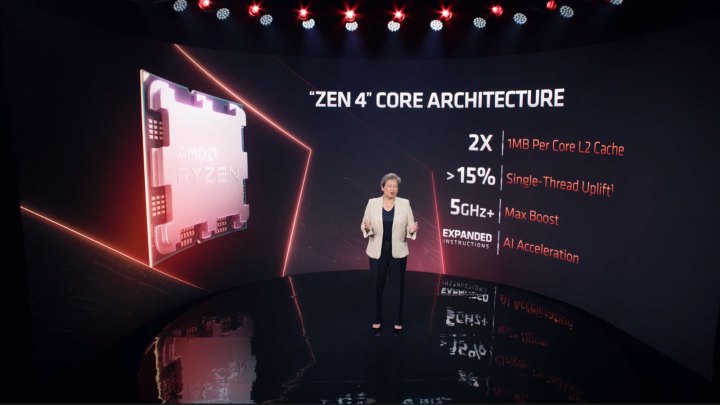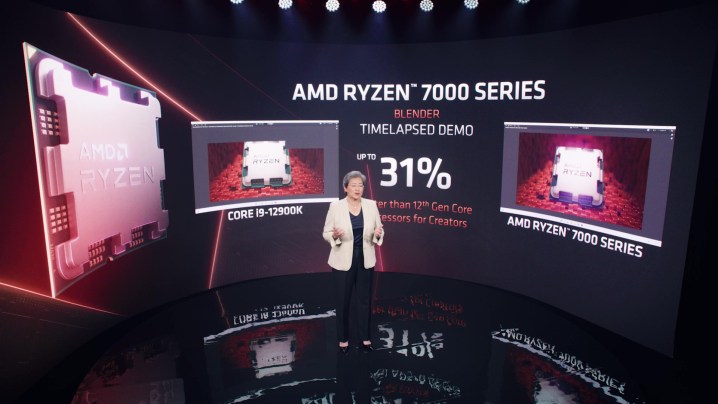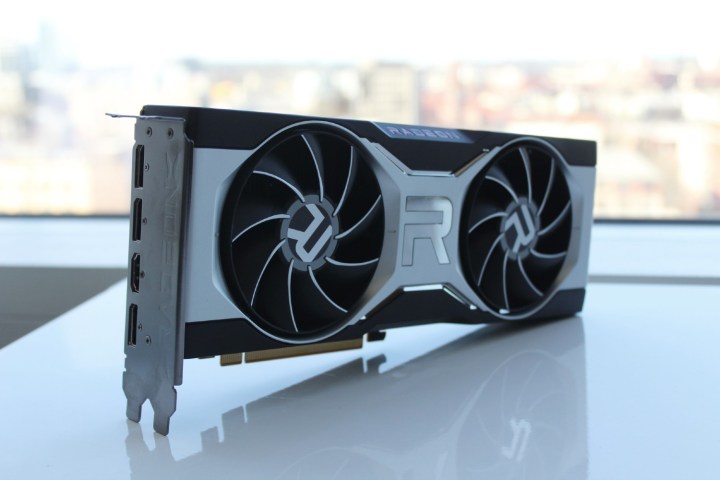AMD Ryzen 7000: Everything we know about Zen 4 CPUs
AMD Ryzen 7000 looks set to be the true next-generation desktop CPU featuring Zen 4 cores. Here's everything we know about AMD's next-generation processors.

AMD kicked off 2022 with its new Ryzen 6000 mobile CPUs, and its current-gen gaming king, the Ryzen 5800X3D. But the true next-generation AMD processors are coming later this year, with a new Zen 4 architecture, a new 5nm process node, higher clock speeds than ever before, and a massively expanded feature and supported hardware list. AMD’s Ryzen 7000 processors should be the most important CPUs AMD has released since the first-generation Ryzen chips in 2017.
Here’s everything we know about Ryzen 7000 so far.
Pricing and availability

AMD confirmed at Computex 2022 that its Ryzen 7000 CPUs and AM5 motherboards would launch in Fall 2022, putting it somewhere between September and November. That’s a little later than some hoped for, but suggests that the original Q3 predictions were more late-Q3 than early.
Pricing is still up in the air but is likely to be similar to its existing range of Ryzen 5000 processors, which retained their launch price tags for most of their lifecycle, only dropping after the launch of Intel’s hotly-competitive Alder Lake processors.
For reference, here are the prices of Ryzen 5000 chips at the time of writing:
Ryzen 5 5600X: $200 Ryzen 7 5700X: $299 Ryzen 7 5800X: $310 Ryzen 7 5800X3D: $450 Ryzen 9 5900X: $391 Ryzen 9 5950X: $549These are significantly lower than they were when the chips first launched, however, and have been discounted ahead of Zen 4’s launch, so expect prices to be close to 50% higher when Zen 4 debuts.
Architecture

The Ryzen 7000 chips are based on the new Zen 4 architecture. This is a continuation of the Zen microarchitecture that AMD has been using since Ryzen 1000, but it continues the evolution of the chiplet design pioneered on Zen 2 and is built on TSMC’s new enhanced 5nm process node.
The 5nm node — known as N5 at TSMC — is said to offer a 15% boost in speed and 1.8X transistor density over N7, helping the node consume 30% less power for improved performance and efficiency. That’s not to say Zen 4 will match those improvements, but it’s likely what’s enabled such large increases in clock speeds, without a ballooning TDP.
AMD confirmed a maximum TDP of 170W on its new-generation chips, with major changes to their design. Each 5nm chiplet will have up to eight cores, with a doubled L2 cache of 1MB per core. Each die will also feature a new 6nm I/O die with onboard Radeon RDNA 2 graphics and AI acceleration.
It’s not yet clear whether the new chips will benefit from AMD’s 3D VCache technology used in its 5800X3D CPU, but since AMD didn’t release any details on it, it’s possible we’ll see that used for a mid-generation refresh to boost gaming ability between CPU lines, the same way AMD did with Zen 3.
Performance

We still don’t have robust numbers on just how well AM4 CPUs perform, but the details are starting to come out, even if we need to view them through a skeptical eye.
AMD claims that the new CPUs will enjoy a more than 15% increase in single-threaded performance, which if it can be extrapolated across multiple cores at once, would see Zen 4 CPUs enjoy an enormous performance advantage over both Zen 3, and Intel’s 12th-generation Alder Lake processors.
That improved performance comes from the process and architecture efficiency improvements, as well as a huge uplift in frequency. At Computex 2022 AMD showed a recorded game of Ghostwire Tokyo running on a Zen 4 CPU at up to 5.52 GHz, though the frequency did bounce around between there and a more modest 5.3GHz. That’s a huge increase over the claimed 4.9GHz the 5950X is capable of, and more again over its typical real-world frequencies which were lower in games.
Managing these kinds of frequencies at a maximum TDP of just 170W would be a serious win for AMD, because not only should it mean world-beating gaming performance, but doing so at a power draw vastly lower than the flagship Intel Alder Lake CPUs. This doesn’t mean it won’t have stiffer competition from the upcoming Raptor Lake CPUs, but it bodes well for AMD’s launch that pre-production chips can already hit such high frequencies.

Outside of gaming, AMD is claiming big improvements in multi-threaded performance in productivity software too. In a demo at Computex, it showed an unnamed eight-core Ryzen 7000 CPU going head to head with Intel’s 12900K in Blender. It managed to complete the short run up to 31% faster than the Intel CPU.
Another feature that should help boost performance is support for DDR5 memory. In AMD’s Computex test notes it claimed to be running a kit of DDR5 6,000 MHz memory, which is significantly higher than the 4800MHz memory officially supported by Intel’s 12th gen CPUs.
It’s not yet clear if AMD will support DDR4 memory with Zen 4 too, for better inter-generational compatibility, but a report from Tom’s Hardware suggests AMD’s AM5 platform — which will house Ryzen 7000 chips — will only support DDR5 memory, with support for DDR4 potentially dropped entirely. Given how expensive DDR5 is at the moment compared to DDR4, that might mean you’ll have to factor in a noticeable price premium when buying memory to go alongside a Ryzen 7000 CPU.
New chipset and a new socket
 AMD
AMDWith the next generation of CPUs, AMD is retiring the AM4 socket that it has used since the launch of first-generation Ryzen chips. That shouldn’t come as a surprise, as the socket will be some five years old by the time next-gen Ryzen chips show up.
This new socket will use an LGA1718, Land Grid Array design, with the CPU pins on the motherboard instead of on the CPU. Intel has used LGA sockets for several generations, while AMD has stuck with the older Pin Grid Array (PGA) socket design for everything up to Ryzen 5000.
As the name suggests, LGA1718 will feature 1,718 pins on the motherboard. LGA designs can support a higher pin density, and that’s clear to see with AM4’s mere 1,331 pins. Those additional pins will help open up support for DDR5 memory, as well as PCI-Express 5.0, and improved overall performance.
Those new AM5 sockets will be part of a new generation of 600 series motherboards. The X670E extreme motherboards will offer the highest quality VRMs for enhanced overclocking, and will have PCI-E 5 support on every M2 and PCI-E slot; X670 boards will feature mainstream overclocking potential, PCI-E 5 on both the first x16 PCI-Express slot, and at least one M.2 slot, while B650 motherboards will have PCI-E 5 for at least one M.2 slot, and will instead feature PCI-E 4 for the PCI-Express slots.
These new motherboards will bring with them support for up to 24 PCI-E 5 lanes, 14 USB ports running up to 20 Gbps, Wi-Fi 6E, and Bluetooth 5.2. Better yet, thanks to the new integrated graphics AMD 600 motherboards will be able to support up to four HDMI 2.1 or DisplayPort 2 ports.
Although AMD is moving to a new socket design, Ryzen 7000 chips will use the same socket size and will fully support AM4 coolers.
Integrated graphics and APUs

Unlike previous generations of Ryzen processors where AMD released its mainstream CPUs and a smaller range of accelerated processing units (APUs) that did have integrated graphics, AMD is throwing that out with Ryzen 7000. By including the GPU on the I/O die instead of the main CPU chiplets, AMD isn’t having to make any sacrifices to add integrated graphics, so all Ryzen 7000 chips will have an onboard RDNA 2 GPU.
RDNA 2 is the same architecture AMD is currently using on its Radeon RX 6000 graphics cards, as well as the Xbox Series X and PlayStation 5, and the new Ryzen 6000 mobile CPUs, so that should give these chips excellent entry-level gaming capabilities, even when they aren’t paired with a dedicated graphics card.
This is not only great for anyone who doesn’t want to buy a new GPU, but it’s great for troubleshooting GPU issues.

 Tekef
Tekef 































